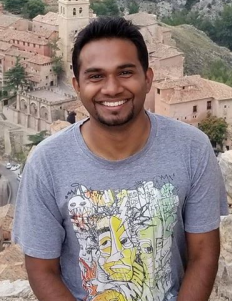Harvard's Tanveer Karim to Speak as Featured Guest for Nantucket Maria Mitchell Association’s Science Speaker Series
On February 10th at 7pm, the Nantucket Maria Mitchell Association (MMA) is hosting a live lecture entitled, “Unraveling the Universe with Spectroscopy and Big Data” presented by former MMA NSF-REU intern, Tanveer Karim. This talk is part of our FREE Winter Science Speaker Series and will be held via Zoom.
The Dark Energy Spectroscopic Instrument (DESI) is an upcoming cosmological survey and experiment that will create the most precise 3D map of the Universe to-date by mapping the positions of 30 million galaxies spanning the past 11 billion years. By precisely measuring the position of these galaxies, DESI will try to shed light on the mysterious Dark Energy, the leading explanation for the accelerated expansion of the Universe, as well as test Einstein’s Theory of Relativity at the largest scales. In this talk, Karim will be discussing what dark energy is, how DESI works, how we plan to measure distances of such a large number of galaxies, and what other interesting science we can expect over the next ten years. In particular, Karim will be discussing how he is using DESI data along with cosmic microwave background (the earliest relic light of the Universe) data to figure out how matter is distributed in our Universe.
Tanveer Karim is a fourth year PhD student and a National Science Foundation Graduate Fellow at Harvard University working on the Dark Energy Spectroscopic Instrument (DESI) experiment. Tanveer’s dissertation work focuses on using a type of galaxy called an emission-line galaxy to study the distribution of matter in the Universe and to measure cosmological parameters that can help us test different cosmological theories.
Prior to this, Karim completed his BS in Physics and Astronomy at the University of Rochester in 2017. In 2016, he was an intern in the MMA’s prestigious NSF-REU program, where his research focused on characterizing the Fermi Bubbles, two large, previously unknown structures associated with our Milky Way Galaxy. Subsequently, he published two papers on this project. Karim also enjoys science outreach activities and mentoring students interested in astronomy. Outside astronomy, he likes reading and learning languages.
To register for this event, please follow the link below:
https://zoom.us/webinar/register/WN_czUoCIHJRZKRZKSdhcPX2A
For the full Winter Science Speaker Series schedule, please visit our website here:
https://www.mariamitchell.org/learn-discover/2021-winter-speaker-series
This series is organized by the Maria Mitchell Association, a private non-profit organization. Founded in 1902, the MMA works to preserve the legacy of Nantucket native astronomer, naturalist, librarian, and educator, Maria Mitchell. The Maria Mitchell Association operates two observatories, a natural science museum, an aquarium, a research center, and preserves the historic birthplace of Maria Mitchell. A wide variety of science and history-related programming is offered throughout the year for people of all ages.
For Immediate Release
February 3, 2021
Contact: Kelly Bernatzky, MMA Development Associate
Recent Posts





